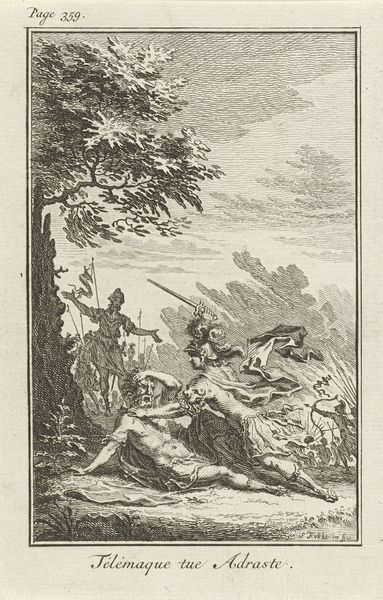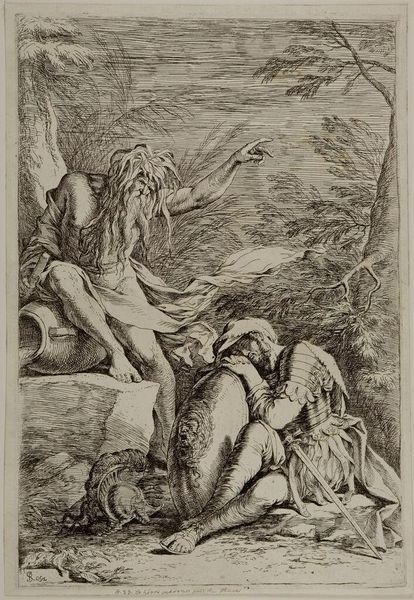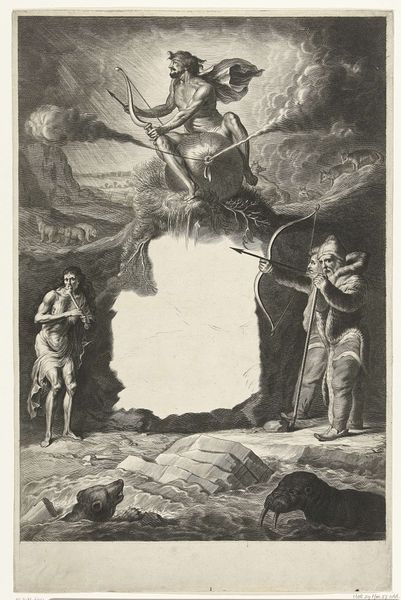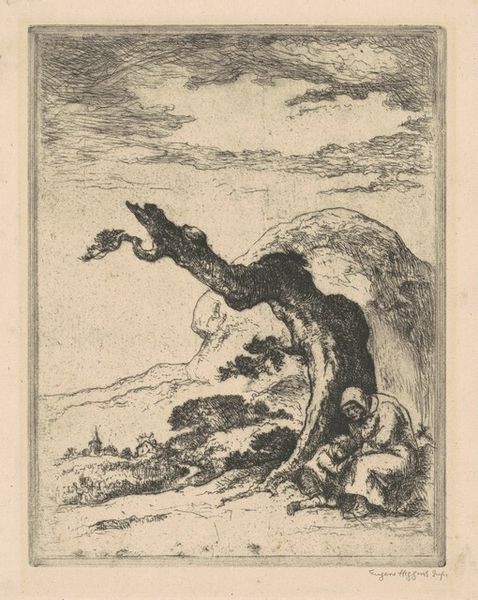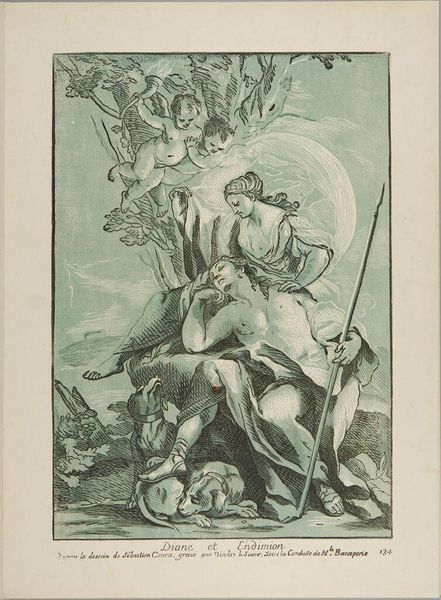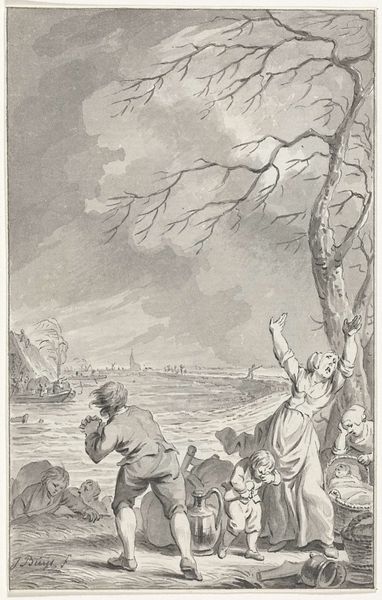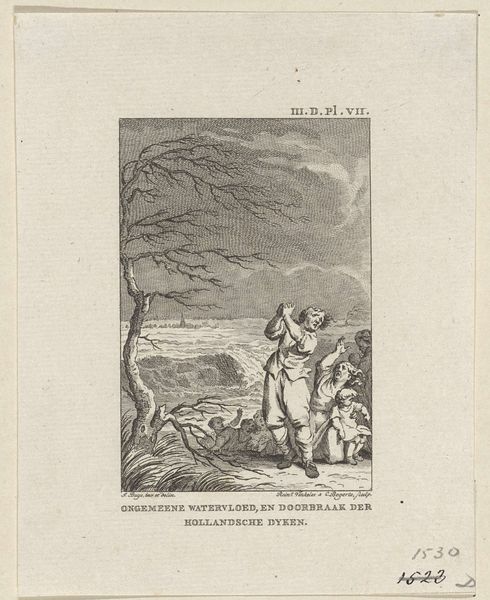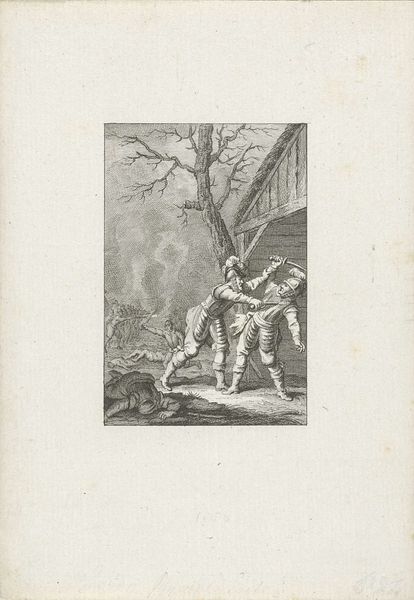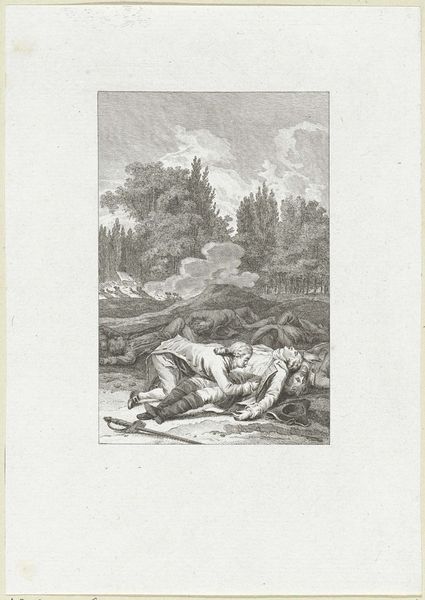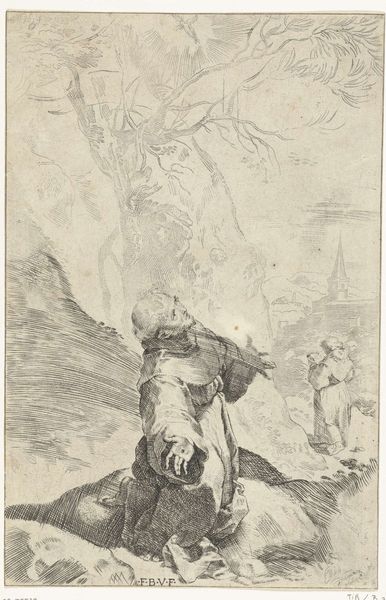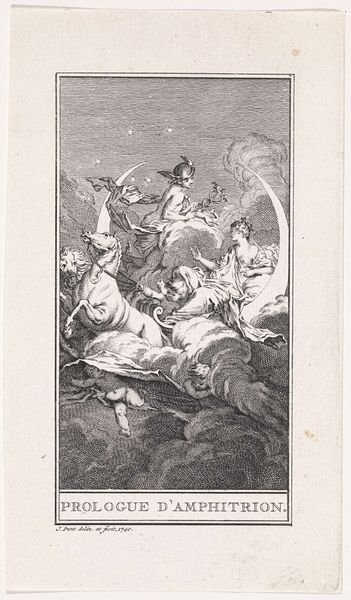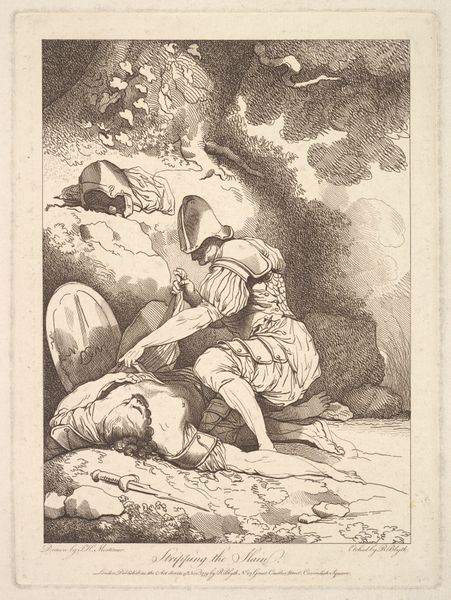
Dimensions: height 82 mm, width 56 mm
Copyright: Rijks Museum: Open Domain
Curator: Jacobus Buys created this ink drawing, entitled "Dike Breach and Flood in Holland, 5 November 1530," sometime between 1778 and 1795. It's currently held here at the Rijksmuseum. What are your first impressions? Editor: Total devastation, a world turned grey and frightening. I see terror in the faces, a desperate fight against nature's fury. It's viscerally upsetting. Curator: Indeed. The composition is striking. Buys masterfully uses line and wash to convey the sheer chaos of a natural disaster. Notice how the horizontal lines of the flood contrast with the more upright figures of the people. It enhances the sense of overwhelming force. Editor: The way the tree bends so dramatically… it's almost a character itself, mirroring the people's despair. And the loose, sketchy style adds to the feeling of immediacy, like we’re right there in the middle of it all. Were these kinds of disaster scenes a common subject? Curator: They were, especially within Romanticism. There was a fascination with the sublime, the overwhelming power of nature, often juxtaposed with human vulnerability. Think of the works of Turner and Caspar David Friedrich, and how they employed dramatic compositions to elicit a profound emotional response. Editor: Right, that push and pull between awe and dread. I feel that so acutely here. The body language too… the figures clinging to each other, shielding their faces. It's not just a record of an event; it’s about the very human experience of facing something unimaginable. There is incredible dynamism created using sparse compositional techniques. Curator: Absolutely. And the relative lack of color directs the eye immediately to the dynamism you are talking about, heightening the effect on the senses by drawing focus onto tonal contrasts. The drawing embodies the Romantic aesthetic perfectly, where human emotion takes center stage. Editor: Thinking about how long ago this disaster took place and then looking at Buys' depiction created centuries later – it strikes me that these kinds of primal fears and tragedies never truly leave us. The anxiety lives on. Curator: Yes, and the way Buys translated the historical account using the language of Romanticism helps this relatively small sketch convey something universal. Editor: Something that’s still felt today, perhaps even more acutely now. Food for thought. Curator: Indeed. Thank you.
Comments
No comments
Be the first to comment and join the conversation on the ultimate creative platform.
